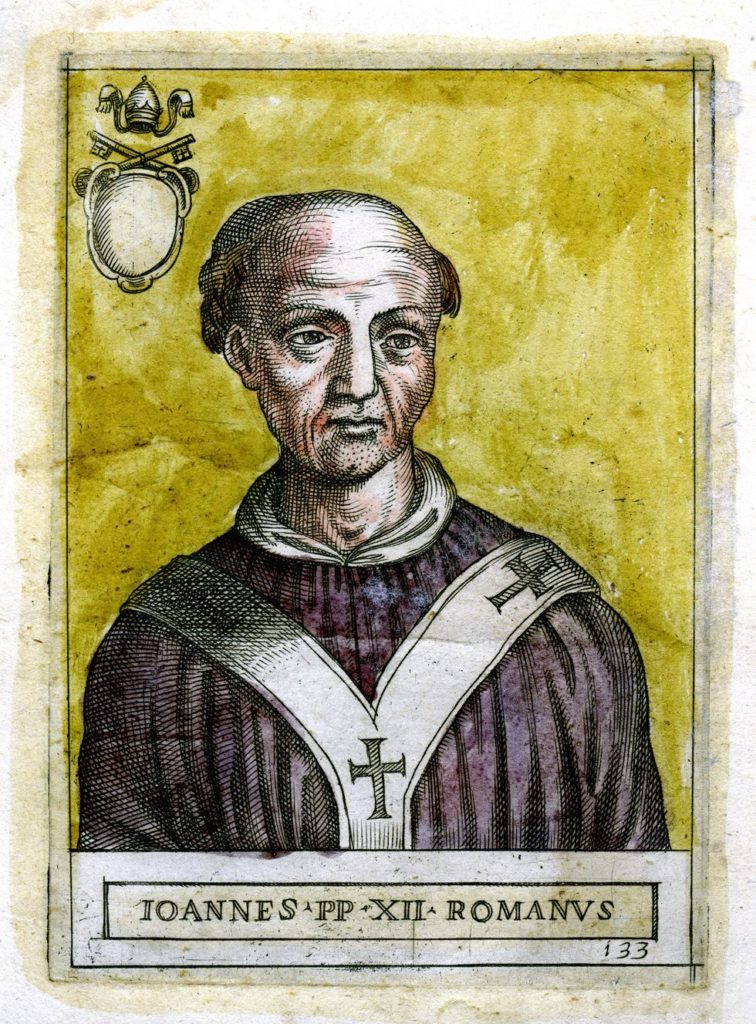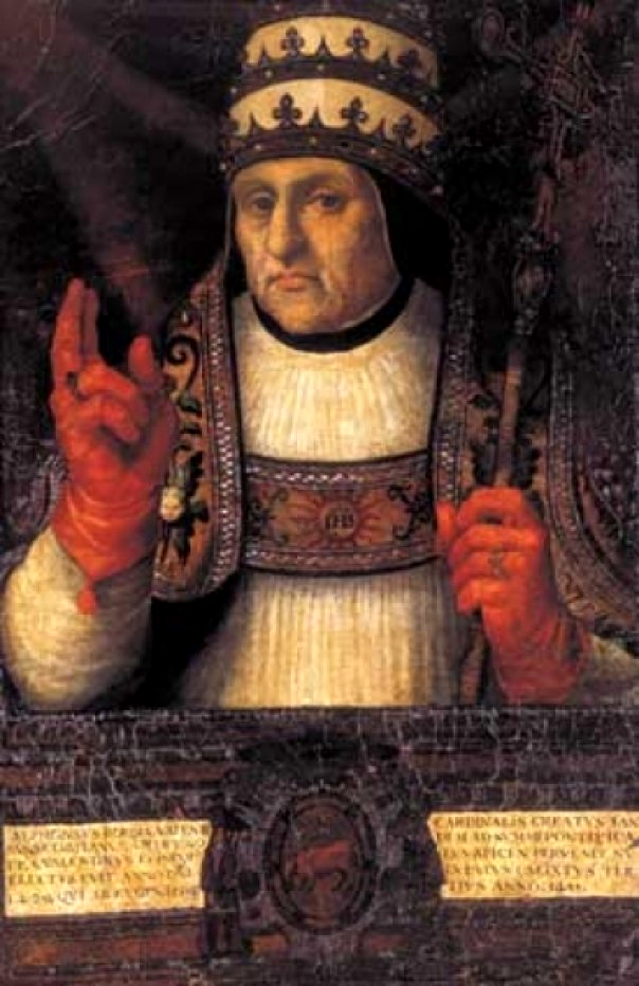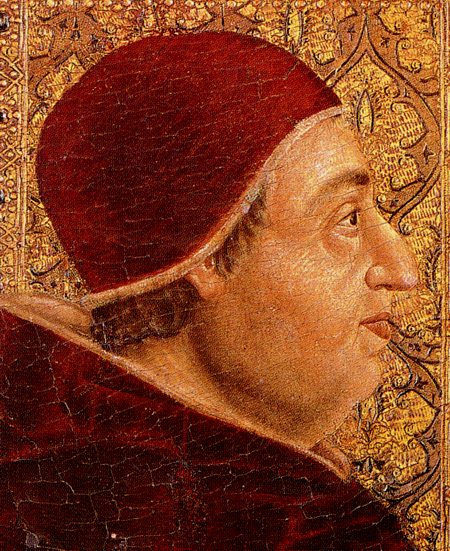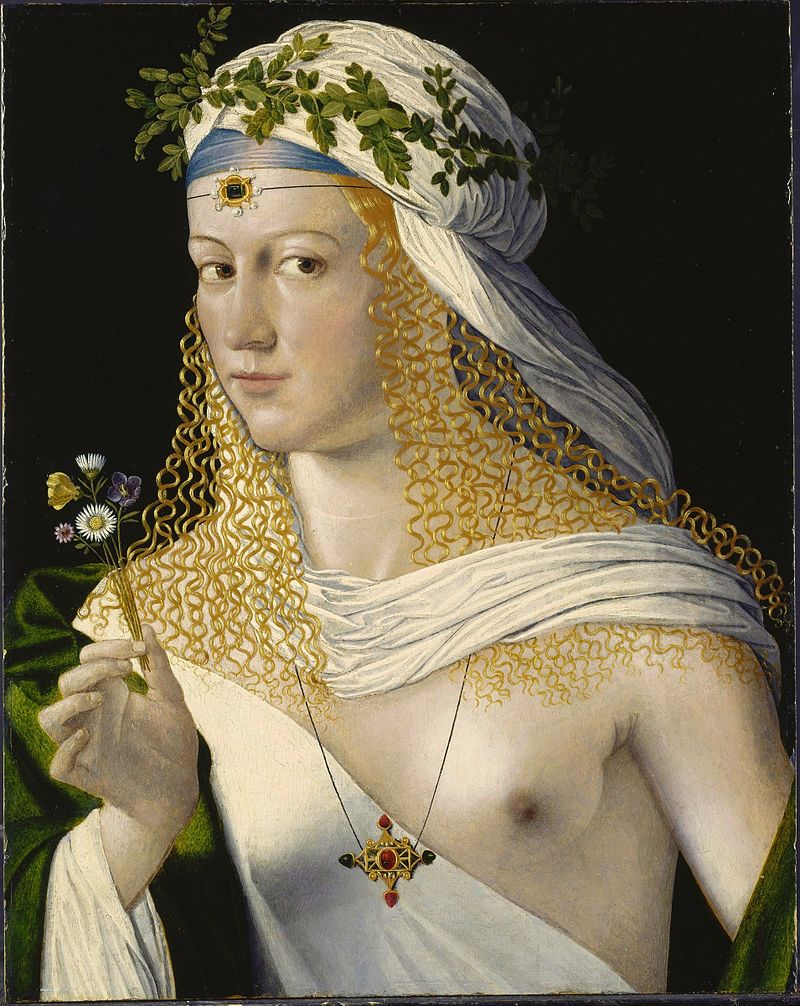Sex
and marriage were nowhere easy for the kings. These were public affairs. The
heir to the throne was a central issue at every royal house. And if a king
ascended the throne as a child, he didn't know what to do on his wedding night.
It was no different in France in the Middle Ages.
Charles VIII. of France, and his
early years of and coronation
Pope
Alexander VI. and Charles VIII. lived and ruled in the same
period. Charles VIII. lived and ruled in the XV century. He became
ill a lot after his birth and spent most of his childhood in bed. He cried over
romantic knight stories and loved to hear about the heroic deeds of Charles the
Great. He was passionate about describing the Crusades. However, they didn't
teach him, so he was almost analphabetic.
His
appearance was also disadvantageous: he was a short and slightly distorted man,
with a disproportionately large head, six toes, besides, he was speech impaired
and often twitched convulsively.
He
was thirteen when his father died, and he was crowned in Rheims. However, he
ruled on his own only from the age of 21. After the coronation, everyone was
shocked that the king showed signs of fabulous sex addiction. He was a sexual
giant in terms of both the number of women and his performance. For a few
years, he only chased the female staff of his palace, the maids and cooks. When
he was 15, he threw himself at the court ladies and young countesses.
The
marriage of Charles VIII. of France.
When
the Bretons and French were at war for five years, during the wartime, the king
was finally able to relive the stories he heard as a child. Beyond that, he was
only interested in sex and fucked the peasant girls who were brought to
him. After five years, as requirements of peace was, that he Charles
had to married with Anna from Brittany. Anna was 16 years old and did not want
to be a wife of Charles VIII. It was not a miracle in terms of the king's
appearance. The princess objected and cried on her wedding night. Soon,
however, her opinion changed because the king impressed her with his sexual
performance. The queen then insisted on daily sex. She fell in love with her
husband on her wedding night. None of them knew about it, but behind the
curtain, 6 people were hiding and took a note about what had happened on their
wedding night. The detailed description can be found today in the Bibliotheque
Nationale in Paris. According to the document, the queen was entirely
satisfied. Anna soon gave birth to the boy's heir, Orlando, but the king soon
tired of her. He preferred to have fun with various princesses.
A
prostitute who stopped the king Charles VIII.
The
main goal of Charles VIII. was to win a war and occupy the Kingdom
of Naples in order to be king of Jerusalem. He had a great desire to take
action against the dangerous Ottoman Empire. In the war, first, he reached the
city of Lyon, where he only discussed with his generals and had sex with local
prostitutes. Soon, however, he fell in love. His attraction was a young Italian
woman working as a prostitute. The girl's aunt was her fence. Two French
officials even tried the girl and admired her ability. They agreed that this
girl was the last chance to prevent war. They were thoroughly taught what they
expected of her.
She
chose the tactic of playing the virtuous and unattainable woman. The king was
forced to visit the girl's house, which stood in the poor quarter, in his
magnificent royal chariot and with a beautiful accompaniment. He wanted to
impress her, and he succeeded.
From
then on, they spent all their time having sex. The king even held cabinet
meetings in her aunt's house, in the kitchen, while the king was with his
lover. Unfortunately, the name of the girl is not known in history. However,
her relationship with the king and the cabinet meetings held in her aunt's
house were documented in a letter by Count Belgiojosó to Ludovico Sforza. These
letters are still available to researchers to this day! This prostitute had a
secret. She realized that the king remained a child all his life and therefore
treated him that way. Finally, the king became under her control. It is not
clear that did he know that the girl is a prostitute or not, or he knew it but
didn’t care.
After a year,
Count Belgiojoso took a stand against the king’s scandalous behaviour. Finally,
Charles VIII. forced himself to move toward, but he reached just Vienne. The
king and his court stopped and camped again. He brought his lover to the camp
and resumed their lifestyle. Later, the plague broke out. The king considered
the plague as a sign, and he launched his occupation. This war was the first
French occupation in Italy, and it was one of the most grotesque wars in
Europe.
Scandalous fashion
To
say a few words about the era: at this time, that is, the XV century, both
women's and men's fashion was scandalous and challenging. Mainly in Florence
and Venice. The women's clothes were so deep that their breasts would then fall
out of it. Therefore, the women painted their nipples red. The men's clothes
were almost as fancy as the women's. The men put their genitals in stuffed bags
with various ornaments and small bells. When the man saw a beautiful woman and
demanded it, his penis immediately stiffed. And because of this, the
decorations and bells rang. The loud bell signal meant intense emotions, the
"bell ringing" an unstoppable desire. The women competed that if they
walked the streets, who would be accompanied by the loudest music. They did
everything they could to make them desirable. There were lust and sex in the
air. Let us not forget that this was also the age of the courtesans of Venice!
The cheerful and erotic atmosphere
was ended when Charles VIII. and the French army occupied Florence and Venice.
The last years of Charles VIII.
When
his three-year-old son, Orlando, died, he tried to give birth to a new heir.
They tried several times, but Queen Anna remained barren. By the age of
twenty-seven, the king was already old and tired, balding, and not so
interested in sex. His death was just as grotesque as his whole life. When he
went to a knight tournament, he hit his head, lost consciousness, and died an
hour later, in April 1489.





















